| Columns Retired Columns & Blogs |
Balanced Audio Technology VK-3iX preamplifier & & VK-55 power amplifier VK-3iX Measurements
Sidebar 3: VK-3iX Measurements
I looked first at the Balanced Audio Technology VK-3iX's solid-state phono stage and assessed its performance at the tape-out jacks. However, this was somewhat difficult to assess with the internal switch in its high-gain position, as it needs to be fed from a very low source impedance, akin to that of a moving-coil cartridge. Even with the Audio Precision System One's source impedance set to 25 ohms, the interaction between the generator and the phono stage meant that the output waveform was massively distorted. The solution was first to insert shorting plugs into the unused line-level inputs, then to use the Ray Samuels Emmeline SR-71 headphone preamplifier (reviewed by Wes Phillips in September), which has an output impedance of <1 ohm, as a unity-gain buffer between the signal generator and the VK-3iX's phono input.
The phono-stage voltage gain was either 41.9dB or 58.2dB, suitable for typical moving-magnet or MC cartridges, respectively. The input impedance was 52k ohms, and the phono stage preserved absolute polarity. The RIAA error (fig.1) was commendably low, while the signal/noise ratio in the low-gain setting was an excellent 60dB. This is a wideband, unweighted figure; switching in an A-weighting filter improved the S/N ratio to 70dB.
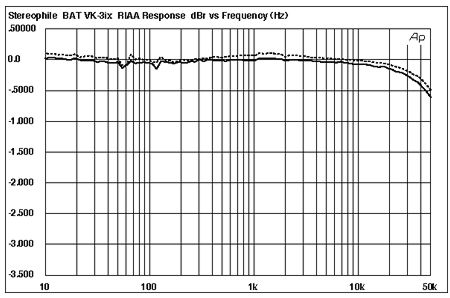
Fig.1 Balanced Audio Technology VK-3iX, phono input RIAA response (0.5dB/vertical div.).
At normal operating levels, the phono stage's THD+noise percentage hovered around 0.15% across the audioband. The VK-3iX also offered very high overload margins even when set to high gain, where I measured >27dB at 20Hz and 1kHz and 19dB at 20kHz. (These levels are referred to a nominal MC output voltage of 500µV at 1kHz.) Peculiarly, the margins in the low-gain setting were not quite as good, at 23dB and 15.3dB, referred to 5mV at 1kHz, but these are still very good figures in absolute terms.
Turning to the BAT's line input, which in the sample supplied for measurement featured two 6H30 SuperTubes, the voltage gain for balanced in to balanced out, with the volume control set to its maximum position of "99," was 19.1dB. The corresponding figure for unbalanced in to unbalanced out was 6dB lower, as expected. The unity-gain setting of the volume control was "61" for full balanced operation, "74" for unbalanced. Absolute polarity was preserved in all conditions; ie, the preamp was noninverting.
The unbalanced input impedance was usefully high, at just over 100k ohms over most of the audioband, this dropping inconsequentially to 90k ohms at 20kHz. Unusually, the balanced input impedance, though always high, varied with frequency. Measuring >130k ohms at the frequency extremes, it dropped to 60k ohms at 1kHz. This will have no subjective consequences, but it surprised me. The VK-3iX's output impedance was also high, and this might well have an effect on sound quality, depending on the input impedance of the partnering preamplifier. The unbalanced source impedance varied from 7k ohms at 20Hz to 1460 ohms at 1kHz and 2650 ohms at 20kHz, while the balanced figures ranged from a very high 14k ohms at 20Hz to 1850 ohms in the midband and above.
As a result, the preamplifier's frequency response into an admittedly unrealistically low load of 600 ohms was curtailed at the frequency extremes (fig.2, bottom pair of traces). However, into 100k ohms, which is more typical of the load the VK-3iX will see in use, the response is flat up to 100kHz (fig.2, top traces), with a slight ultrasonic peak evident. This graph was taken with the volume control set to "61"; there is an interaction between the volume-control setting and the preamplifier's line-stage bandwidth, as can be seen from fig.3. The extended response with the volume control set to "61" changes to a 1dB rolloff at 20kHz when the control is set to "99." Fortunately, it is extremely unlikely that VK-3iX owners will need this much gain. Channel separation at 1kHz was 86dB R–L and 77dB L–R, these figures decreasing at higher frequencies.
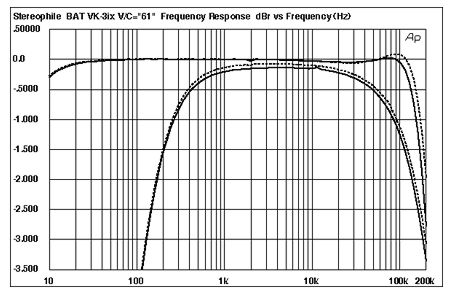
Fig.2 Balanced Audio Technology VK-3iX, balanced line-input frequency response at 1V into 100k ohms (top) and 600 ohms (bottom). (1dB/vertical div.)
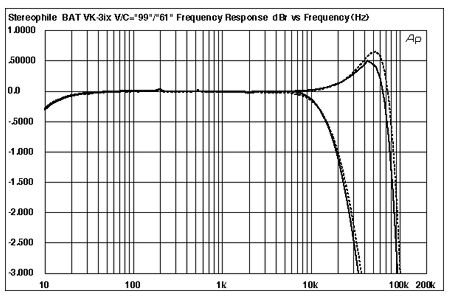
Fig.3 Balanced Audio Technology VK-3iX, unbalanced line-input frequency response at 1V into 100k ohms with volume control set to "61" (top above 1kHz) and "99" (bottom). (0.5dB/vertical div.)
The VK-3iX was capable of sourcing very high voltages. Fig.4 plots the THD+noise percentage in its unbalanced output against voltage; the 1% THD clipping point is not reached until almost 15V, even into a fairly low load of 10k ohms. Only into 1k ohm does the clipping level decrease significantly, but even then, no fewer than 5.9V are available—well above that which will be required in typical use. With balanced operation, twice the voltage was available at clipping, as expected. More important, you can see from the shape of the traces in fig.4 that the distortion remains buried below the preamplifier's noise floor until 2–3V, which is pretty much the maximum voltage the VK-3iX will be asked to provide in real-world conditions. A sensible gain architecture.
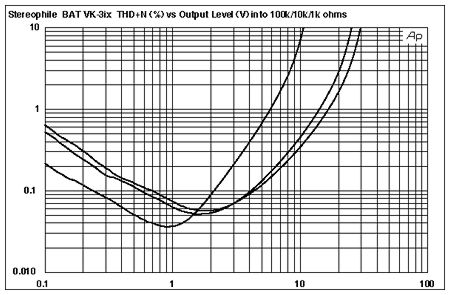
Fig.4 Balanced Audio Technology VK-3iX, distortion (%)vs 1kHz continuous unbalanced output voltage into (from bottom to top at 1V): 1k, 10k, 100k ohms.
The VK-3iX offered low levels of distortion, a 1V signal featuring just 0.02–0.03% across the audioband (not shown). Of greater subjective importance, the spectrum of that distortion (fig.5) was predominantly the benign second harmonic in nature, from both the balanced and unbalanced output jacks. Intermodulation distortion was also low (fig.6).
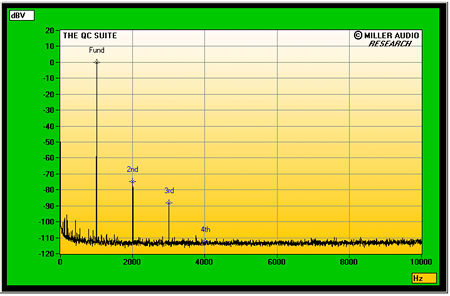
Fig.5 Balanced Audio Technology VK-3iX, spectrum of 1kHz sinewave, DC–1kHz, at 1V unbalanced into 8k ohms (linear frequency scale).
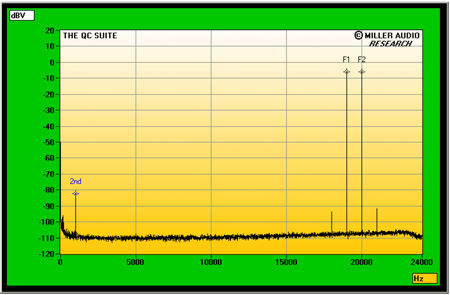
Fig.6 Balanced Audio Technology VK-3iX, HF intermodulation spectrum, DC–24kHz, 19+20kHz at 1V unbalanced peak into 8k ohms (linear frequency scale).
Other than its incompatibility with low load impedances, which will not be a factor when it is used with BAT's own power amplifiers, the VK-3iX is a sensibly engineered component.—John Atkinson
- Log in or register to post comments




































